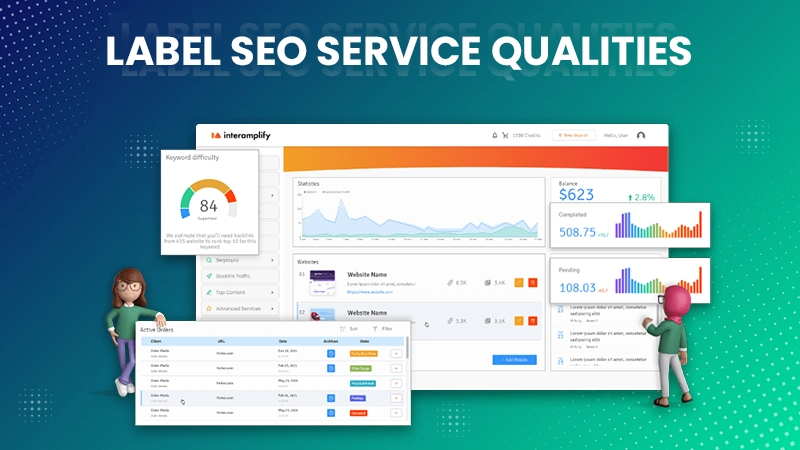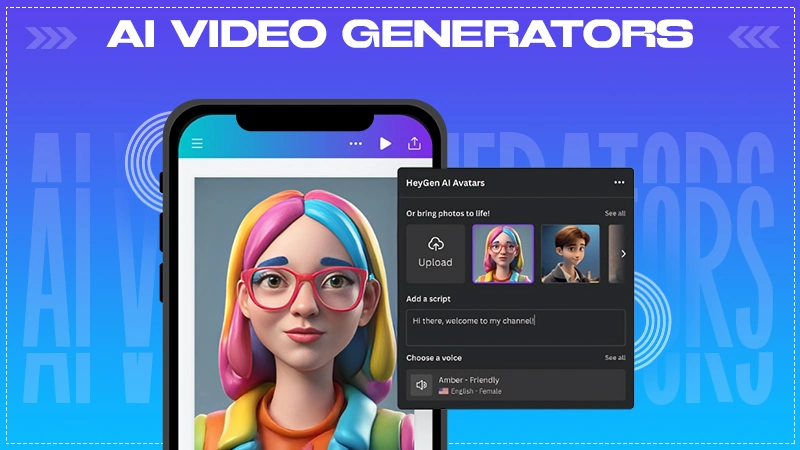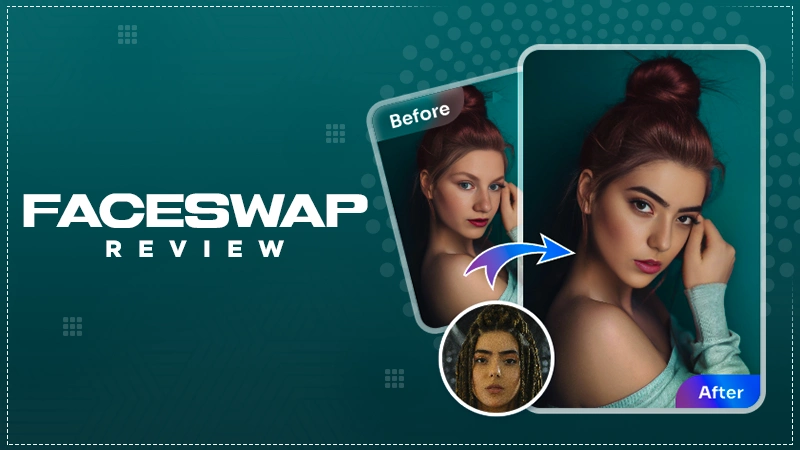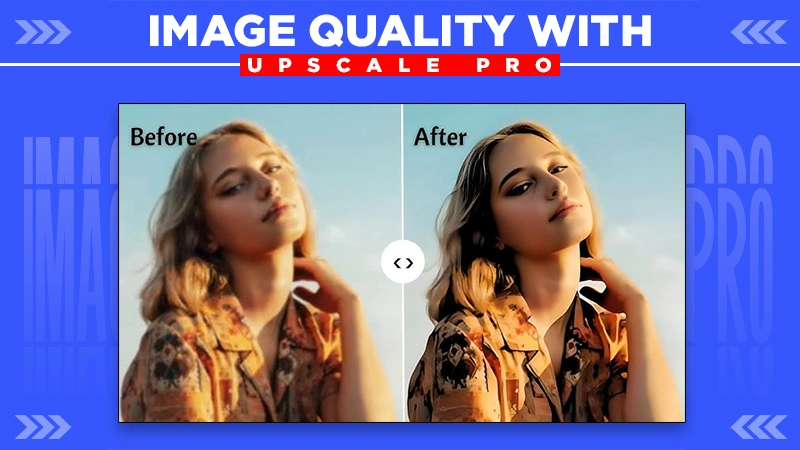10 Types of Propaganda Techniques in Advertising
Advertising propaganda is a type of advertising that uses persuasive techniques to promote a particular idea, product, or service. It generally refers to tricks employed by marketers and advertisers to sway the choices that customers and clients make in order to increase sales. And, hence, it is one of the best marketing tips for boosting brand awareness in the physical world.
The goal of advertising propaganda is to influence the beliefs, attitudes, and behaviors of the target audience. They accomplish this by using advertisements to influence people’s opinions.
Advertising propaganda often employs emotional appeals, such as fear, happiness, or patriotism, to create a strong association between the product or service and the desired feeling. It can also use persuasive language, imagery, and other techniques to create a sense of urgency or exclusivity, making the target audience feel like they need to act quickly or that they are part of a select group of individuals who have access to the product or service.
Advertising propaganda can be found in a variety of media, including print, radio, television, and online advertising. It is often used by corporations, political groups, and other organizations to promote their interests, products, or services.
While advertising propaganda can be effective in generating interest and sales, it is important for individuals to critically evaluate the messages they receive and not be swayed by emotional appeals or misleading information.
Nevertheless, with that said, let’s move on to see 10 types of propaganda techniques that are used in advertising.
Card Stacking
Card Stacking is one of the most widely used propaganda techniques in advertising. Card Stacking advertising purposefully highlights one point while downplaying the other points that might be negative. It gives the good things precedence over the bad. This is accomplished by unfairly emphasizing the salient and favorable aspects of the product.
Card stacking is the practice of using false and implausible statistics to promote a product.
Only details that promote and back the product, are used by advertisers.
There are several instances of card stacking in modern advertising. It is widely used in communication projects because it is effective at influencing a large number of people. The success of the tactic is aided by the fact that the audience would have to exert a lot of effort to learn about the adversary.
In the world of mass media and rapid media, card-stacking propaganda is crucial for influencing large audiences to support a range of political or commercial positions.
The majority of food advertisements are perfect examples of card-stacking propaganda.
Have a look at this Burger King commercial.
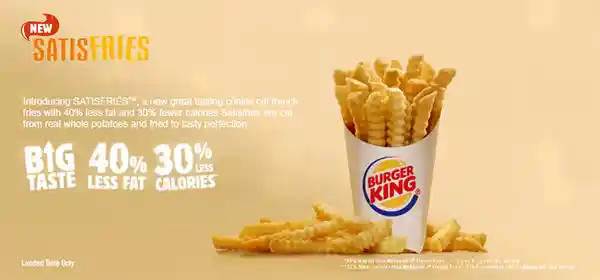
Who wouldn’t purchase a delicious package of fries with 40% less fat? Unquestionably, Burger King’s depiction of a number of facts and statistics in this graphic is successful in holding the viewer’s interest.
Just the good aspects of the product are bolded in this commercial, but the actual details about the fries that are listed at the top are difficult to gauge. Moreover, the detrimental effects of consuming fries are not mentioned.
Bandwagon
We all exhibit social behavior and as we are members of society, we are obligated to adhere to its norms. Not only is it a notion, but it also has prestige implications, if we veer off course, we risk being “missed out.”
The goal of Bandwagon propaganda advertising is to attract the target audience to join in so that they do not miss out on what everyone else is doing or has achieved using their service product. This type of propaganda advertising strategy focuses on the target audience’s desire to be included. They deliberately do this in an effort to pique the potential customer’s curiosity about what life may be like with the stated service or good.
If something is beneficial to one individual, it need not be beneficial to all. But, we are so sure of this that we consider even things that are not vital to be essential. Being a follower of the crowd suggests that the buyer or potential purchase is superior to those who choose to go against the majority in terms of taste, coolness, and intelligence.
Not just tweens and teens who are eager to blend in with their friends are lured by this strategy, but also everyone wants to feel like they are a part of something amazing and joyful, and this propaganda advertising appeals to that need only.
The basic tenet of bandwagon marketing is that it plays on people’s emotions, who need to blend in with the popular group.
Let’s understand this with the help of the “Mabelline – America’s Favorite Mascara” campaign, which is a perfect example of the usage of propaganda techniques used in advertising.
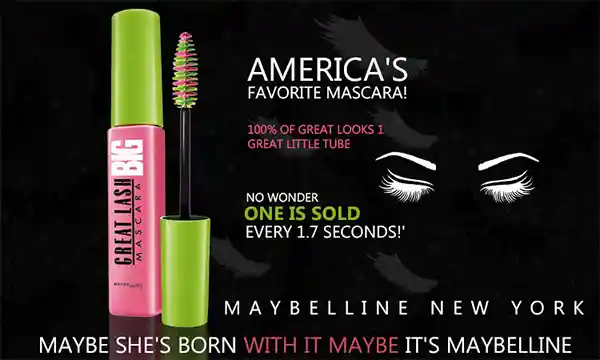
The primary purpose of this advertising is to highlight the fact that Maybelline Great Lash Mascara is the best-selling mascara all over the American continent. After reading this statement, viewers will undoubtedly wonder if it is the most popular since if it is, it must be the greatest and superior to what they use. And, therefore, they will be tempted to try this out!
Fear Appeal
In advertising, a message that poses a significant threat to the intended audience is referred to as Fear Appeal propaganda advertising, which is very common among different types of propaganda techniques that are being used. The goal of the advertising approach is to convince the target market to engage in or refrain from a specific activity by instilling fear in them.
A few theories that have been proposed in regard to the attractiveness of the product include the fear-as-acquired drive model, the parallel process model, and the protective motive theory. The extended parallel process model brings together the best elements of numerous prior models, adds to the body of knowledge, and helps us understand why appealing to fear works.
The advertising for Royal Jordanian Airlines with the slogan “Are You Afraid Of Flying?” is the best example of Fear Appeal. It is depicted that a man is hesitant to fly for fear of encountering prejudice on board.
The advertisement ends by urging viewers not to be scared to object to such behavior and highlighting the need of creating a welcoming environment within the company’s airplanes.
However, it’s important to note that not all advertisements that employ the fear appeal strategy encourage viewers to take part in the for-profit activity.
Ad Video:
Transfer Technique
This tactic of propaganda advertising seeks to unfairly connect the audience’s positive associations to a completely unrelated concept. Transfer propaganda frequently uses symbolism to lead its target audience to make inferences that they would not think about before seeing the advertisement.
Advertisers employ symbols or objects that are closely associated with consumers’ strong beliefs, such as religion, national flag, well-known people, etc., to persuade them to accept their message.
An advertisement will be able to emotionally impact you and persuade you to adopt his views if he is able to connect his notion with our deeply held values.
The Transfer advertising technique is used in numerous advertisements since it is an extremely powerful propaganda tactic.
Try understanding this with the help of an example:
Your patriotism will take over if an advertisement features your national anthem, flag, or any other element that makes you feel a strong sense of loyalty to your country.
The brand will become synonymous with your affection for your nation, which will undoubtedly enhance your perception of it.
Look at the image below:
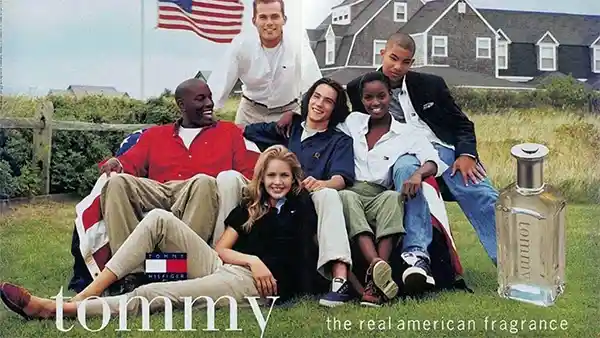
The advertiser claims that Tommy is the “true American fragrance”. This is one among many examples of the advertisement using propaganda techniques, which is Transfer.
And, it can be easily inferred from this picture, that the advertisement is referring to the following emotion: If you purchase this product, it suggests that you are a loyal American.
Clearly, it helps to have the American flag in the background in delivering the impact of the statement, and it more strongly appeals to the viewer’s patriotic emotions.
Testimonial
When a celebrity or other individual supports a particular service, philosophy, or item, it is widely known as testimony propaganda. This advertisement technique is used to influence people’s opinions without giving them the chance to carefully analyze the available facts by themselves.
In this kind of propaganda, advertisers frequently use respectable or well-known customers of the business, and try to persuade the target audience by stacking well-known person’s opinions over their own.
Consumers believe that a product will be nice if celebrities and experts endorse it and think it is good. Whatever the product’s value and cost, the appeal of the celebrities determines how well it sells.
Further, former customers who provide online testimonials on how your service or products have helped them simultaneously inspire new potential customers, increase traffic to your brand’s website and physical store, and improve brand recognition.
The delighted clientele and business customer testimonials are the main motivators for prospective customers.
Businesses use it as a sophisticated type of promotion to raise demand for their services and products. They function admirably for online advertising, social media ads, and pretty much anywhere else!
To better understand this, consider the advertisement example below:
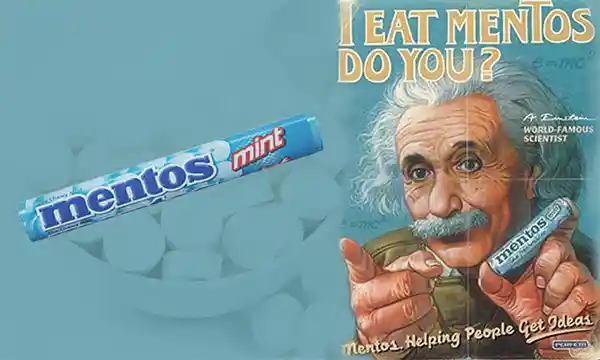
You must have guessed what propaganda strategies were using the advertisement above. Well, that was an easy guess, but it is also not hard to interpret what the advertisement is implying.
We are all aware that Albert Einstein was a scientist renowned for his brilliant creations and concepts, who is seen in this advertisement saying that he consumes Mentos. He is also enquiring as to whether or not you eat it. Therefore appealing to viewers that they should eat Mentos in order to think creatively like Einstein.
Stereotyping
Stereotypes are generalized, simplistic beliefs about certain groups that are then applied to particular individuals. Advertising that uses stereotypes either reinforces or challenges this particular group of people. Those who want to be associated with them or who feel like they are being singled out by the advertisement, are drawn to these types of commercials.
The business discourages gender stereotyping in advertising since it is a well-known problem, which is also sometimes exploited while making an advertisement. Nonetheless, there are situations when it can also be done to improve society’s perspective on something that is particularly considered normal and highly stereotypical.
An advertisement campaign by ‘Always’ is a great example of it:

More than 150 nations saw the Always #LikeAGirl campaign, which dramatically expanded global awareness and changed people’s attitudes toward the phrase “like a female.”
Before watching the movie, just 19% of 16 to 24-year-olds associated the phrase “like a girl” positively. But after seeing it, 76% said they had changed their minds about the phrase. Also, two out of every three males who watched it said they would think twice before using the phrase “like a Girl.”
Plain Folks
There are several methods for getting someone to do something. When words make an emotional connection with individuals, they can influence behavior such as casting a vote, making a purchase, or changing one’s opinion.
The plain folk’s propaganda is an advertising tactic that uses common individuals to show that average people use and value a product or service that has been put out in advertising. The objective is to demonstrate the product’s value to all consumers.
By presenting the product or service using common people, advertisers show that it has broad appeal.
For a long time, the primary means of generating product sales in advertising was celebrity endorsements. But as a result of the popularity of this advertising propaganda, the appeal to common people has recently been more prominent.
Consider whether you would be inclined to purchase a product that a celebrity was endorsing, such as dishwashing soap. Even if we are all conscious of it, these celebs must not know the soap they use at home.
Skim the picture below of how Walmart has advertised itself, which is the perfect example of strikingly engaging commercial title and propaganda techniques used together:
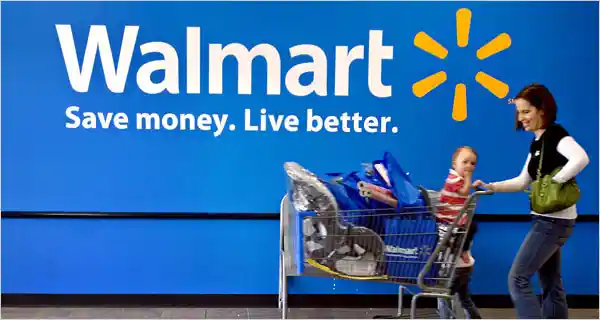
Because a mother can be seen pushing her child’s trolley is a perfect example of an everyday person engaging in everyday activity. This image will be familiar to any mother who has ever gone grocery shopping with her little ones.
Furthermore, it is paired with an ideal message that assures that you will save money on groceries and be able to use it elsewhere to raise the quality of your life.
However, there are some sour examples of this type of advertising, though, where the brand transmits the incorrect message.
A Nutella commercial that falsely claimed to be a morning dish when it is actually dessert in a jar was judged to be “misleading” the public and was not allowed to run. A narrator in the advertisement stated that Nutella on toast would be a good addition to a balanced meal as it showcased multiple mothers feeding their children the spread.
Viewers asserted that the advertising was misleading. The advertisement falsely claims that the only ingredients in a jar of Nutella were cocoa powder, hazelnuts, and skim milk and that it is more nutritious than it actually is.
Authorities took action against the corporation and prevented it from showing the advertisement until a few changes were made.
Glittering Generalities
A typical propaganda technique is Glittering Generalities. A dazzling generalization is always used to sway the audience’s opinion in favor of a specific idea, concept, person, or thing.
This glittering generalization is a vague, “feel good,” statement that appeals to people’s desire to associate it with the beliefs they presently bear or aspire to hold. It is a propaganda technique in which individually-meaningless words are combined to make them sound appealing to readers and listeners.
They are commonly used in political campaigns, catchphrases, and slogans. Glittering generalities are used to leave an impression on the audience who is listening to the message.
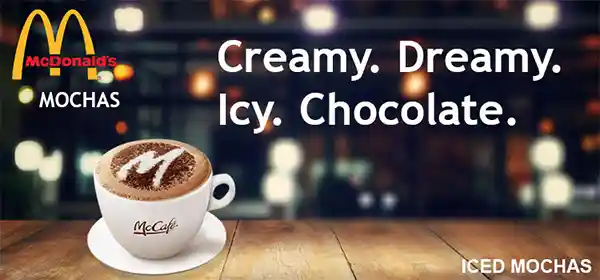
McDonald’s is renowned for its product marketing and advertising. They do their best to engage with consumers through advertisements, and this is what they are doing through this ad.
To emotionally appeal to the buyers, the words “Creamy,” “Dreamy,” “Icy,” and “Chocolatey” are utilized in the image above. These phrases undoubtedly draw customers to the appealing cafe mocha. It has also perfectly landed the idea of a marketing situation where less is more, using fewer words that are delivering more impact.
Further, this propaganda can be better understood with this advertisement of Coke:
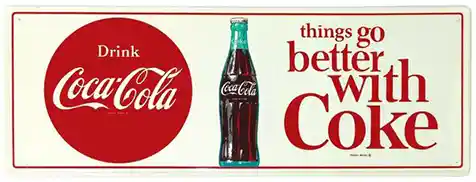
The positive response is brought on by the inclusion of the term “better” in this advertisement.
As humans, we are constantly searching for ways to improve situations and experiences in our life. And that’s what this advertisement claims: A Coca-Cola can make anything better, from a pizza to a movie to a day out.
Name Calling
The name-calling propaganda strategy involves a brand seeking to disparage a direct rival in order to win over customers from that business. The tactic is associating a certain good or person with a derogatory image in order to persuade the audience to reject them rather than verify the information.
The advertisement below promotes a package of chicken noodles without MSG by contrasting it with a similar product that has MSG. The decision to choose a healthier choice or not ultimately rests with the buyer.

This is one of the perfect examples showcasing a very clear case of Name Calling, and looking at the picture, it isn’t hard to tell what propaganda technique is used in the advertisement.
Propagandists employ this tactic in the hopes that a person or thing will be rejected because of a negative emblem, despite having favorable aspects. As shown in the example below:

This is an advertisement by Android. Given that it refers to the Apple Company, this ad is self-explanatory, and through this, Android wants to convey to its users that whatever things Apple delivers are meaningless and that only Android is reliable.
Ad Nauseam Propaganda
The ad nauseam propaganda strategy has been very popular recently, particularly in online advertising. This strategy targets audiences frequently in order to pique their attention.
Repetition is a key component of this sort of propaganda. Ad nauseam marketing initiatives repeatedly target audiences by showing them ads in an effort to stay top-of-mind.
This propaganda is backed by the fact that it’s in human nature to favor things they constantly see or hear out of a sense of familiarity, according to psychological principles.
This strategy is employed by Wix, which reportedly has an annual advertising budget of over $100 million. To achieve maximum effectiveness, it repeatedly runs some of its most profitable advertisements on YouTube and the majority of other social media sites.

Therefore, whether watching videos on YouTube or surfing other social media platforms, you must have seen a few of their ads
How Propaganda Advertising Can Have a Negative Effect on Your Business?
Although deploying propaganda effectively can benefit a company, doing so can get you into trouble as well. A striking example of contemporary propaganda gone wrong is an advertisement that makes false or exaggerated claims. Customers who base their purchases on such advertisements frequently experience outcomes that are drastically different from what they anticipated and express their discontent through a variety of communication methods. This makes the entire campaign pointless.
The negative impacts of advertising and the terrible reputation of public relations specialists led to a pervasive mistrust of the media. Public relations should be advantageous to all parties concerned, but it can be challenging to fully trust companies, and their products and services when they slant facts and events to suit their own self-serving agendas.
Erroneous interpretations of propaganda may affect many people emotionally and personally, which ultimately affects their self-esteem.
Thereby, people become more motivated to actively research products and services before making purchases and to educate themselves on current events in order to avoid relying exclusively on the media for all information.
So, both the advertisers and the public should avoid such false information that is disseminated under the guise of “advertising.”
Conclusion
Advertising companies are in the business of promoting products and drawing in more and more customers in order to maximize profits. Yet you can protect yourself from these influences by choosing products and services after doing your own study on them.
Propaganda tactics used in advertising have a lot of detrimental consequences on society. For instance, watching advertisements that falsely promise weight loss in a matter of weeks will cause an overweight person to have unrealistic expectations, which will result in frustration.
The solution to this problem is to educate yourself so that you are not dependent on the media to tell you what is best for you. And if you have access to the internet in this day and age, I believe you can quickly determine what is best for you.
However, you get to make the final call for yourself. You are ultimately responsible for selecting the appropriate and high-quality item based on your needs and specific product demands that ultimately suit your pocket.



